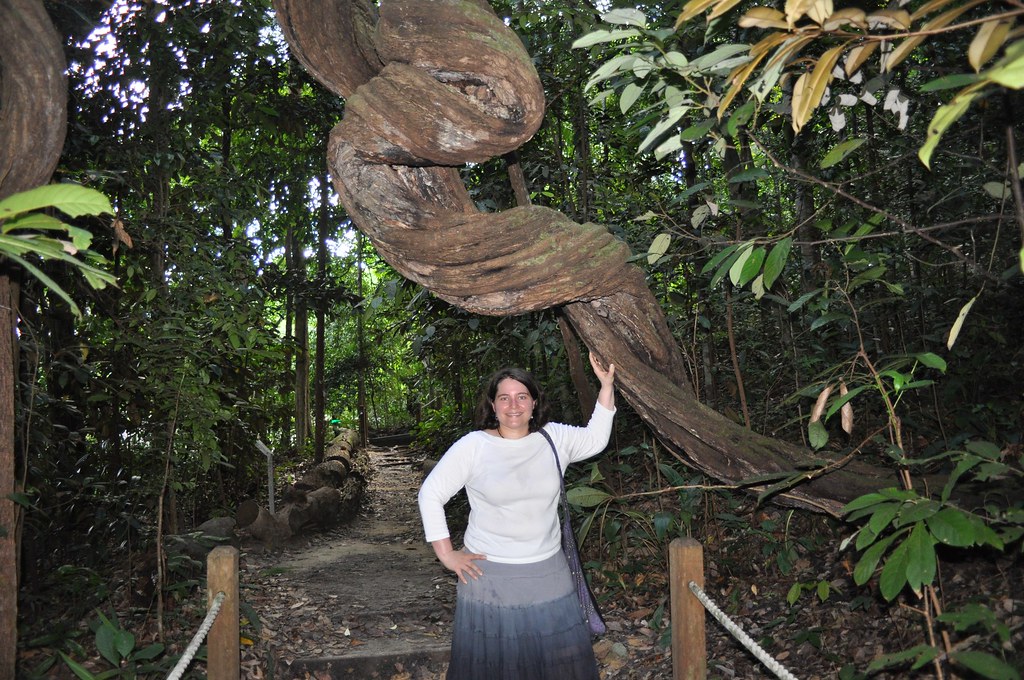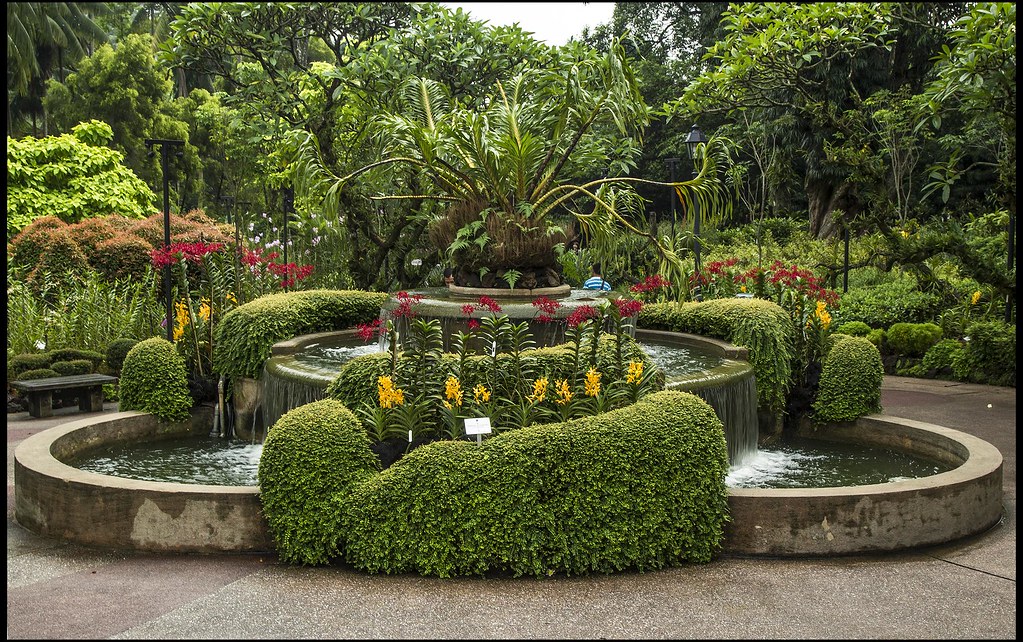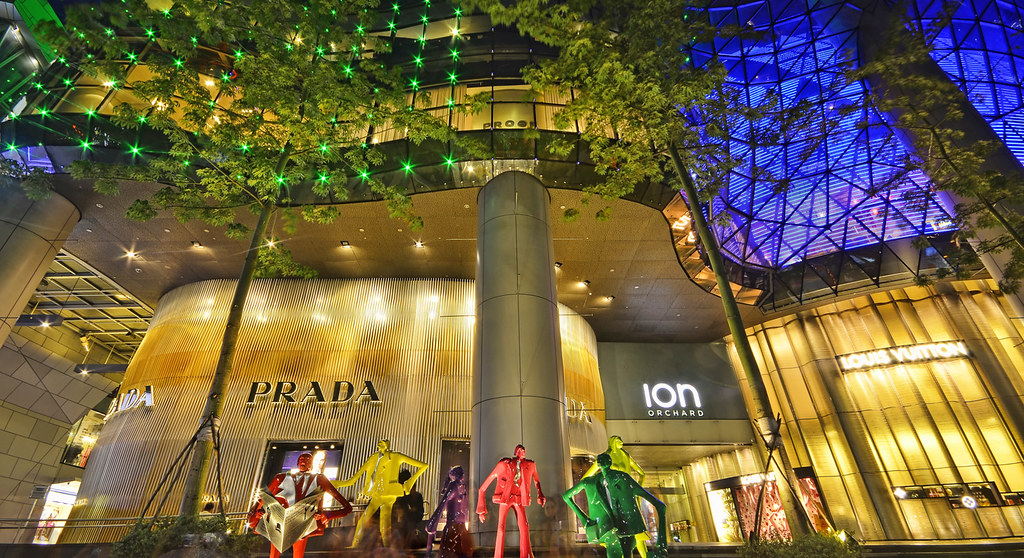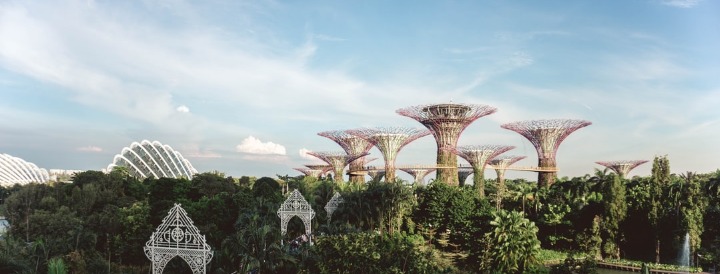2024 Singapore Tourist Guide
Conveniently linked by a kilometer-long causeway to the southern tip of Malaysia, the tiny city-state of Singapore (just 580 square kilometers) makes a gentle gateway for many first-time travelers to Asia, providing Western standards of comfort and hygiene alongside traditional Chinese, Malay and Indian enclaves. It’s downtown areas are dense with towering skyscrapers and gleaming shopping malls, yet the island retains an abundance of nature reserves and lush, tropical greenery.
About Singapore
Singapore is a wealthy nation compared to the rest of Southeast Asia, with an average per capita income of over US$15,000. At the core of this success story is an unwritten bargain between Singapore’s paternalistic government and acquiescent population, which stipulates the loss of a certain amount of personal freedom, in return for levels of affluence and comfort that would have seemed unimaginable thirty years ago. Outsiders often bridle at this, and it’s true that some of the regulations can seem extreme: neglecting to flush a public toilet, jaywalking, chewing gum and eating on the subway all carry sizeable fines. Yet the upshot is that Singapore is a clean, safe place to visit, its amenities are second to none and its public places are smoke-free and hygienic.

Of more relevance to the millions of visitors, Singapore receives each year is the fact that improvements in living conditions have been shadowed by a steady loss of the state’s heritage, as historic buildings and streets are bulldozed to make way for shopping centers. Singapore undoubtedly lacks the personality of some southeast Asian cities, but its reputation for being sterile and sanitized is unfair. Much of the country’s fascination springs from its multicultural population: of the 3.87 million inhabitants, 77 percent are Chinese (a figure reflected in the predominance of Chinese shops, restaurants, and temples across the island), 14 percent are Malay, and 7 percent are Indian, the remainder being from other ethnic groups.
The entire state is compact enough to be explored exhaustively in just a few days. Forming the core of downtown Singapore is the Colonial District, around whose public buildings and lofty cathedral the island’s British residents used to promenade. Each surrounding enclave has its own distinct flavor, from the aromatic spice stores of Little India to the tumbledown backstreets of Chinatown , where it’s still possible to find calligraphers and fortune-tellers, or the Arab Quarter , whose cluttered stores sell fine cloths and silks.
Singapore is just 136km north of the equator, which means that you should be prepared for a hot and sticky time whenever you go; temperatures hover around 30°C throughout the year. November, December and January are usually the coolest and the wettest months, but rain can fall all year round. July usually records the lowest annual rainfall.
Singapore Attractions
Once dismissed as bland and tasteless, Singapore has evolved into one of Southeast Asia’s most enjoyable cities. From its past as a colonial outpost, the capital has transformed into a soulful, diverse, and rich city known for its fashion emporiums, dozens of parks, architectural legacy and absorbing cultural life. The food alone is enough to make Singapore a premier destination, but the city also draws visitors with its stylish nightlife, distinct neighborhoods, numerous beaches, adventure activities, natural beauty, and vibrant energy.
Beyond the city, you’ll find Bukit Timah Nature Reserve, the splendid Singapore Zoological Gardens, complete with night safari tours, and the oriental Disneyworld attractions of Haw Par Villas. Offshore, you’ll find Sentosa, the island amusement arcade which is linked to the south coast by a short causeway (and cable car), and Pulau Ubin, off the east coast, where the inhabitants continue to live a traditional kampung (village) life.
Bukit Timah Nature Reserve
Singapore is the only world capital that contains a patch of primary rainforest within its borders. The 164-acre Bukit Timah Nature Reserve contains more plant species than the entire North American continent, including more than 840 flowering plants. The dense forest is home to over 500 species of animals, including long-tailed macaques, flying lemurs, and fairy bluebirds. Although the trails are easy to follow along, a local guide can offer valuable insight into the ecosystem.

If you would rather explore Singapore’s nature in a slightly more controlled environment, head to the city’s world-class zoo. Most of the animals are allowed to roam freely in natural habitats. Orangutans climb trees right above visitors’ heads, proboscis monkeys swing from branches, and mouse deer, kangaroos and lemurs often scamper right across the pathways. At night, the zoo puts on special safaris that highlight nocturnal creatures like leopards and the Malayan tiger.
Chinatown
Throw yourself into the cultural heart of the capital in Chinatown. The lively neighborhood provides a glimpse into the city’s history with its faithful restoration of temples, shops, and residences. Traditional businesses thrive, selling everything from incense to silk garments and herbal remedies. It is easy to lose yourself in the bustling alleyways, but that is part of the Chinatown experience.
Museums
Singapore is home to some of Asia’s best museums. More than 7,000 drawings, prints, paintings, sculptures, and photographs are on display at the Singapore Art Museum, and the National Museum showcases some of the country’s greatest treasures. Walking through the American Civilizations Museum is like taking a crash course in the continent’s history, and the Peranakan Museum tells the story of Singapore’s first settlers.
Botanic Gardens
Escape the hustle and bustle of the city at the Botanic Gardens. The bucolic retreat is filled with elderly people doing tai-chi, local dog walkers, joggers and people-watchers enjoying the virgin rainforest. The nearby National Orchid Garden contains over 1,000 species of orchid and is one of the most lovely places in the city.
Adventurous travelers can get the best view of the city from the 165-meter-high Flyer, the world’s largest observation wheel. The 30-minute ride is worth the steep admission and is most enjoyable at night when the downtown skyscrapers glitter with neon lights.

The religious diversity of Singapore is quite remarkable, and non-followers are welcome at most religious sites. Those particularly worth a visit include the Burmese Buddhist Temple, Arab Street’s stately Masjid Sultan, Chinatown’s fanciful Sri Mariamman Hindu Temple and the expansive monastery near Ang Mo Kio.
The small city-state is packed with other notable sights, including the shops of Orchard Road, Little India, the thriving commercial district of Clarke Quay, the Jurong Bird Park, the Arab Quarter and the Marine Life Park, the world’s largest oceanarium.
Food
Along with shopping, eating ranks as the Singaporean national pastime. An enormous number of food outlets cater to this obsession, and strict government regulations ensure that they are consistently hygienic. The mass of establishments serving Chinese food reflects the fact that Chinese residents account for more than three-quarters of the population.
North and South Indian cuisines give a good account of themselves too, as do restaurants serving Malay, Indonesian, Korean, Japanese and Vietnamese food. The closest Singapore comes to an indigenous cuisine is Nonya, a hybrid of Chinese and Malay food that developed following the intermarrying of nineteenth-century Chinese immigrants with Malay women. Several specialist Chinese restaurants and a number of Indian restaurants serve vegetarian food, but otherwise, vegetarians need to tread very carefully: chicken and seafood will appear in a whole host of dishes unless you make it perfectly clear that you don’t want them.
By far the cheapest and most fun place to dine in Singapore is in a hawker center or food court, where scores of stalls let you mix and match dishes at really low prices. Otherwise, there’s a whole range of restaurants to visit, ranging from no-frills, open-fronted eating houses and coffee shops to sumptuously decorated establishments. Most open 11.30 am-2.30pm and 6-10.30 pm daily.
Singapore Festivals
With so many ethnic groups and religions represented in Singapore, you’ll be unlucky if your trip doesn’t coincide with some sort of festival, either secular or religious. Most of the festivals have no fixed dates , but change annually according to the lunar calendar; check with the tourist office. Bear in mind that the major festival periods may play havoc with even the best-planned travel itineraries.
Over the month of Ramadan (between Jan & April) in particular, transport networks and hotel capacity are stretched to their limits, as countless Muslims return to their family homes; during Ramadan, Muslims fast during the daytime. Many hotels and restaurants shut for up to a week over Chinese New Year (early springtime). Some festivals are also public holidays (when everything closes).

Not all religious festivals are celebrated in public, but some are marked with truly spectacular parades and street performances. In springtime, during Chinese New Year, Chinese operas and lion and dragon dances are performed in the streets and colorful parades process along Orchard Road. And at Thaipusam, entranced Hindu penitents pierce their own flesh with elaborate steel arches, and process from the Sri Srinivasa Perumal Temple to the Chettiar Hindu Temple. Similar feats are executed by mediums on the occasion of the Birthday of the Monkey God (summer), best witnessed at the Monkey God Temple on Seng Poh Road. Every year, the whole island goes into an eating frenzy for the month-long Singapore Food Festival (July), with almost every food outlet staging events, tastings, and special menus.
The Festival of the Hungry Ghosts (summer) is a good time to catch a free performance of a Chinese opera, or wayang, in which characters act out classic Chinese legends, accompanied by cymbals, gongs, and singing; a few weeks later, the Moon Cake Festival, or Mid-Autumn Festival, is celebrated with children’s lantern parades after dark in the Chinese Gardens.
For the nine nights of Navarathiri (autumn), Chettiar Temple stages classical Hindu dance and music, and at the Sri Mariamman Temple, the Hindu firewalking ceremony of Thimithi (autumn) is marked by devotees running across a pit of hot coals. Deepavali (Oct/Nov), the Hindu festival celebrating the victory of Light over Dark, is marked by the lighting of oil lamps outside homes.
Shopping in Singapore
For many stopover visitors, Singapore is synonymous with shopping, though contrary to popular belief prices are not rock bottom across the board, due to the consistently strong Singaporean dollar and a rising cost of living. Good deals can be found on watches, cameras, electrical and computer equipment, fabrics and antiques, and cut-price imitations – Rolexes, Lacoste polo shirts and so on – are rife, but many other articles offer no substantial savings. Choice and convenience though, make the Singapore shopping experience a rewarding one. What’s more, come during the Great Singapore Sale (usually in June or July), and you’ll find seriously marked-down prices in many outlets across the island. The free monthly, Where Singapore, has plenty of suggestions as to what you can buy and where, and the STB publishes a Merchants of the Gold Circle brochure, which lists those shops deemed courteous and reliable enough to display the ‘Gold Circle Promise of Excellence’ logo in their windows.

If you have any complaints to lodge, contact the Retail Promotions Centre on 450 2114 or, better still, go to Singapore’s Small Claims Tribunal , Subordinate Courts, Apollo Centre, 2 Havelock Rd (tel 535 6922), which has a fast-track system for dealing with tourists’ complaints; to have your case heard costs S$10.
A goods and services tax (GST), introduced in 1994, has added a three percent sales tax to all goods and services, but tourists can claim a refund on purchases of S$300 or over at retailers displaying a blue and grey Tax Free Shopping sticker. Ask retailers to draft you a Tax-Free Shopping Cheque, which you can then redeem subsequently at the airport. Usual shopping hours are daily 10am-9pm, though some shopping centers, especially those along Orchard Road, stay open until 10pm (except the Christian-owned C K Tang’s, which closes on Sunday).
For designer clothes, tailor-made suits, sports equipment, electronic goods or antiques, head for the shopping malls of Orchard Road. At Arab Street , you’ll find exquisite textiles and batiks, and some good deals on jewelry. From here, make a beeline for the silk stores and goldsmiths of Little India , via the intersection of Bencoolen Street and Rochor Road, known for its electrical goods. As well as its souvenir shops, Chinatown boasts some more traditional outlets.
Books Times bookshops at 04-08/15 Centrepoint, 175 Orchard Rd, and 02-24/25 Raffles City Shopping Centre, 252 North Bridge Rd. Books Kinokuniya, 03-10/15 Ngee Ann City, 391 Orchard Rd, is the island’s biggest bookshop. MPH shops are also well-stocked, especially the flagship store on Stamford Road. Select Books, 03-15 Tanglin Shopping Centre, 19 Tanglin Rd, has a huge array of books on Southeast Asia.
Camping equipment Campers’ Corner, 01-13 Paradiz Centre, 1 Selegie Rd.
Computers and software Funan Centre, 109 North Bridge Rd.
Electronic equipment Sim Lim Tower, 10 Jalan Besar, Lucky Plaza, 304 Orchard Rd.
Fabrics and silk Jim Thompson Silk Shop, 01-07 Raffles Hotel Arcade, 328 North Bridge Rd. Aljunied Brothers, 91 Arab St. Dakshaini Silks, 164 Serangoon Rd.
Jewelry The entire first floor of the Pidemco Centre, 95 South Bridge Rd, is a jewelry mart.
Music Beethoven Record House, 03-41 Centrepoint, 176 Orchard Rd, for classical sounds; Lata Music Centre, 42 Race Course Rd, for Indian music on tape; Roxy Records, 03-36 Funan Centre, 109 North Bridge Rd, for new releases; Supreme Record Centre, 03-28 Centrepoint, 175 Orchard Rd; Tower Records, fourth floor, Pacific Plaza, Orchard Rd, for a wide choice of music on CD.
Souvenirs Chinese Mec, 03-31/32 Raffles City Shopping Centre, 250 North Bridge Rd; Eng Tiang Huat, 284 River Valley Rd, for Oriental musical instruments, wayang costumes and props; Funan Stamp and Coin Agency, 03-03 Funan the IT Mall, 109 North Bridge Rd; Selangor Pewter, 02-38 Raffles City Shopping Centre, 252 North Bridge Rd, for fine pewterwork; Singapore Handicraft Centre, Chinatown Point, 133 New Bridge Rd, gathers around fifty souvenir shops under one roof; Zhen Lacquer Gallery, 17 Duxton Rd.
Singapore Geographical Location
Singapore is located between the Johor straight and Singapore Straight near the equator.
Singapore has a population of approximately 5,183,700.
Singapore Language
Mandarin and English are the predominant official languages while Malay and Tamil also hold official status but are spoken in lesser numbers.
Singapore Predominant Religion
- 42% Buddhist
- 15% None
- 15% Muslim
- 10% Other Christian
- 8% Taoist
- 5% Catholic
- 4% Hindu
- 1% Other
Singapore strives to end religious boundaries and several religious groups have merged their places of worship.
Singapore Currency
The Singapore Dollar is the official currency of Singapore.
Singapore Climate
Singapore experiences consistently hot temperatures throughout the year as well as rainfall. Precipitation is also consistent with the exception of
November and December that receive slightly more than the other monthly averages.
Singapore Main Attractions
- Singapore Botanic Gardens
- Chinatown Heritage Centre
- The Singapore Flyer
Other Attractions in Singapore
- Haji Lane
- Geylang
- National Museum of Singapore
- Wet Market
